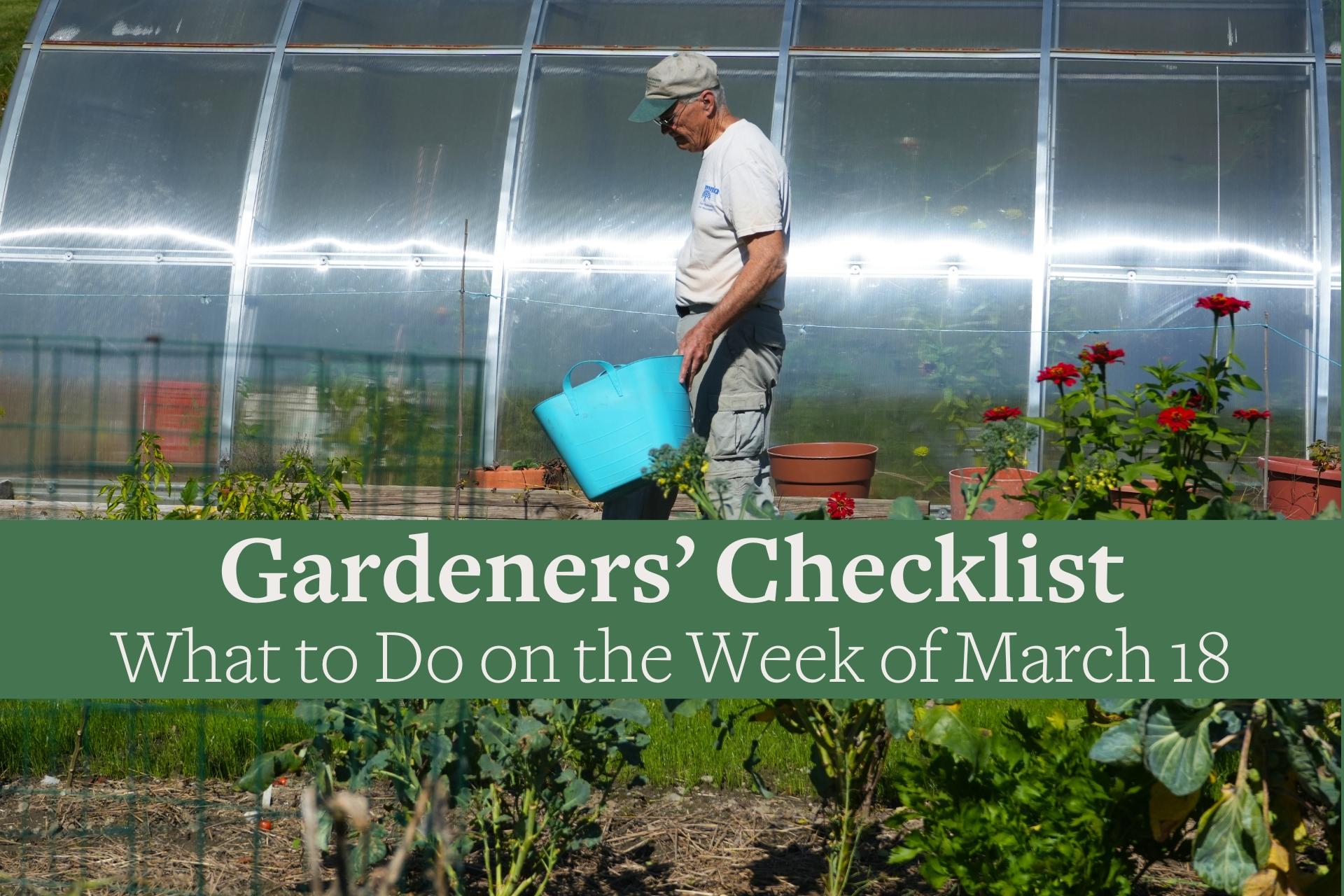You are here
Gardeners Checklist: Here Is What to Do on the Week of March 18
Gardeners Checklist: Here Is What to Do on the Week of March 18
By Ron Kujawski
Whether it’s due to the weather or whether it’s the psychological impact of the official arrival of spring this week, there is a definite buzz in the air. Yes, some of that buzz is from recently awakened honey bees doing their bee thing, which is to collect nectar from early spring bloomers such as crocus. However, most of the buzz is from gardeners picking up the pace of gardening activities. Why busy gardeners buzz I do not know, but here’s your To Do list:
* Finish pruning fruit trees, blueberries, raspberries, and grape vines. Give priority to grape vines since they need the most severe pruning. As much as 90% of the one-year-old growth is removed when grapes are pruned properly.
* Prune to ground level a few of the oldest stems on multi-stemmed shrubs such as forsythia, spirea, ninebark, beautybush, lilac, mockorange, and weigela. Otherwise, these shrubs get overcrowded with stems which in turn reduce air flow and light penetration into the center of the plant. Removing the oldest stems every year or two will keep the shrub healthy and productive.
* Keep sowing seeds of cold hardy flowers, vegetables, and herbs indoors. Warm season crops such as pepper and eggplant can be started now but wait another week or two for tomatoes.
* Don’t let young ballplayers start their spring practice sessions on the front lawn just yet. Soils in many areas are still quite moist and excessive foot traffic on soggy lawns will cause soil compaction. Send the kids off to the neighbor’s yard if they want to play ball. Just don’t tell them you read that here.
* Check the stems of shrubs and smooth-barked trees for damage caused by voles (meadow mice) that gnawed on the bark this winter. Unfortunately, I’ve seen a great deal of such damage this year – naughty little voles. If the critters gnawed the bark all around the trunk and to the light-colored underlying wood, the tree is probably headed for that forest in the sky. If you see reddish or light green tissue where bark was gnawed, there is some hope. That tissue may have the capability of producing new bark. With shrubs whose stems have been girdled by gnawing, cut the stems to near ground level. Most shrubs will produce new growth at their base.
* Dig up any parsnips still in the ground. Do this before they begin to send up leafy shoots. Parsnips have a mild sweet flavor this time of year. While you have garden fork in hand, dig up some roots of horseradish. Grate the roots for horseradish sauce. There’s nothing mild nor sweet about horseradish roots dug in early spring; they are spicy hot, and that’s as it should be.
* Use a screen made with quarter-inch mesh wire and sift wood ash collected this past winter from your fireplace or wood stove, and spread a thin layer of the ash over lawns and gardens.
* Propagate Christmas cactus (Schlumbergera spp.) by breaking off a three or four segment piece of shoot. Let the detached shoot sit for a day before sticking it in a pot of moist potting soil to root.
Ron Kujawski began gardening at an early age on his family's onion farm in upstate New York. Although now retired, he spent most of his career teaching at the UMass Extension Service. He serves on Berkshire Botanical Garden’s Horticulture Advisory Committee. His book, Week-by-Week Vegetable Gardener’s Handbook, is available here.
Help Our Garden Grow!
Your donation helps us to educate and inspire visitors of all ages on the art and science of gardening and the preservation of our environment.
All donations are 100 percent tax deductible.



